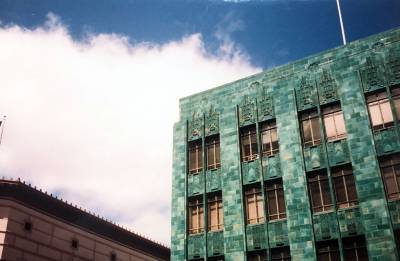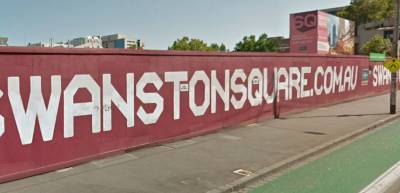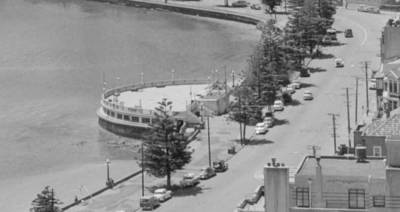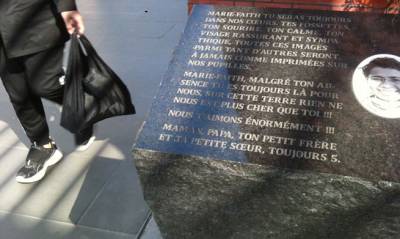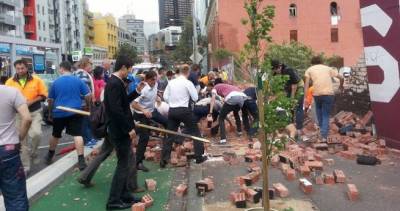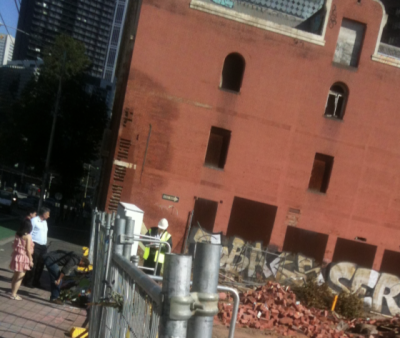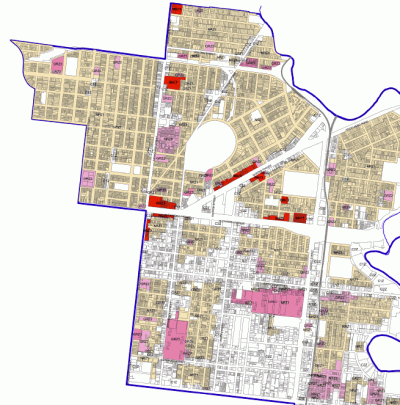home » news » urban planning and urban design » Australia » Victoria
To infinity and beyond
“I want architectural excellence and height … I want buildings that inspire Victorians. If this can be done in the right place, and with beauty, then the sky’s the limit.” Matthew Guy, April 2012

Tower Melbourne – approved November 2012
Continuing in the Melbhattan vein… it’s mildly amusing if developers insist on adding cred to their towers of dogboxes by naming them after more considered New York locations. But what if the Minister for Planning was thinking along the same lines. A Manhattan of the South! It appears that he is. In early 2012 he announced a “Grand CBD”, stretching from Richmond to Fishermans Bend. The Herald Sun labelled it a “Manhattan-style” metropolis, and quoted Planning Minister Matthew Guy, who believes height restrictions need to go to, “make Melbourne an icon in terms of Western cities.” To be an icon these days must mean that a city has to be really big.
Some hint that the proposed relaxation of height controls, already relaxed in the ’90s by Premier Jeff Kennett, is aimed more at Chinese investors and developers wanting high density high-rise. The Age recently noted that, “some established Chinese business and political leaders in Melbourne caution against importing an Asian model of super high-rises and shaded city streets, of “ghost towers.” A ghost tower is one in which apartments are bought as an investment, and not occupied – land banking in the sky.
Is an ‘iconic’ Western city what Mr Guy thinks it is? Or is he building what an iconic Western city once was? James Howard Kunstler would think he is out of step. In this podcast (21 minutes in) he reminds us that apartment blocks had their beginnings in Paris and that their New York equivalent was the result of a craze, assisted by elevators, to imitate 19th Century Paris.
“I’m not a champion of towers and skyscrapers, and I tend to think that the really tall building, that is buildings over six or seven stories… that will really turn out to be a phenomenon of our time, of the 20th and early 21st Century, because you really needed a cheap energy economy to make that possible. But I think that the nett effect will be that we are going to end up with an idea of an optimum scale of the city, and it will be under seven storeys.” James Howard Kunstler
There’s more on the energy inefficiency of living in the sky at Fifth Estate.
Reading many of the minister’s press releases about recent tall buildings that he’s approved, you could be forgiven for thinking that he isn’t so much interested in the grand scheme as he is in more immediate objectives such as job creation and attracting investment to Melbourne rather than somewhere else.
This laissez-faire Brusselisation of Melbourne’s core is proceeding at a gung-ho pace. The 70-odd storey Tower Melbourne was approved by the minister in mid-November. No one in the media noticed for a month – perhaps because the ministry’s planning register is rather effective at burying approvals. While the site has no building height restrictions, it does have a plot ratio limit of 12:1. This building is more like 60:1.
Then on the Friday before Christmas, as the citizens of the metropolis shifted their focus to things sandy, Premier Ted Baillieu released Securing Victoria’s Economy: Planning. Building. Delivering. On page 39, he gets to planning. Its aim is deregulation, the removal of red tape and “green tape”. One item among many other eyebrow curlers is the, “making of new criteria for the Minister for Planning to act as the Responsible Authority to approve major developments with the potential to make significant contributions to the economic future of the state”. No details on what that means, but I think I get the gist of it.
“Continuing reform of our planning system to increase opportunity and productivity will maintain this advantage [in economic confidence] and ensure a strong construction sector.” Matthew Guy, November 2012
How his current powers might be expanded is hard to gauge, given that his department is pretty busy as it is. The following large developments have recently gained approval directly from Mr Guy in recent months, in the City of Melbourne alone. This is an incomplete list cobbled together from various online sources. I am imagining City of Melbourne planners sitting at their desks, glumly sharpening pencils while all the action (or vandalism) happens up the road. Maybe they’re reading the planning scheme’s urban design provisions for the central city[ PDF ] and remembering the good old days when they use to mean something.
February 2013
- 50 storey office building
- Y4, 839 Collins Street Docklands / multi-storey office tower
- 272-282 Queen Street / 50 storey office building
“The redevelopment site is located in an evolving area where planning policy encourages development that supports a vibrant and economically competitive central city while making efficient use of existing infrastructure.” Matthew Guy - 54-56 Clarke Street, Southbank / residential tower
January 2013
- 250 Spencer Street (The Age) / 6 towers 39 to 63 storeys / 3,000 apartments
- New Quay, Docklands / 43+16 levels / 425 apartments
- 568-580 Collins Street / 67 storeys / 588 apartments
- 245-263 City Road / Southbank 46+51 storeys / 786 apartments
“The Southbank area is characterised by a mix of use and large apartment-style towers and bq. I believe this proposal would sit comfortably in this area.” LINK
December 2012
- Y3, 839 Collins Street Docklands / 21 storey office tower
- 706-738 Bourke Street / 24 storey building for Medibank Private
- 559-587 Collins Street / 26 level office tower
- 35-47 Coventry Street / 21 level apartment tower
- 42-48 Balston Street, Southbank / 2 x residential towers
- 374-380 Lonsdale Street / multi-storey office and residential tower
November 2012
- Tower Melbourne / 71 or 68 storeys / Elenberg Fraser ( permit )
- 450 Elizabeth Street / 62 storeys / 541 apartments
- 316 Queen Street (Celtic Club) / 48 storey residentil
- 4C, 735 Collins Street / Multi-storey commercial building
October 2012
- 316-322 Queen Street / 48 storey mixed use.
It isn’t guaranteed that all these approvals means there will be a lot of construction coming our way. Some of these properties will be put back on the market at a higher price, with the permit. Because of the inflated price, the incoming owner needs to increase the number of floors, and so on. The AFR wrote about these phantom buildings in 2011, mentioning the Balston Street development which was again approved last December.
This free-for-all may soon run its course, considering the allegations of croneyism and racketeering at both state and council levels, and the upcoming state elections. But these flats will be well out of the bag by then.
Posted by Peter on 06.03.13 in urban planning and urban design
comment
Commenting is closed for this article.
